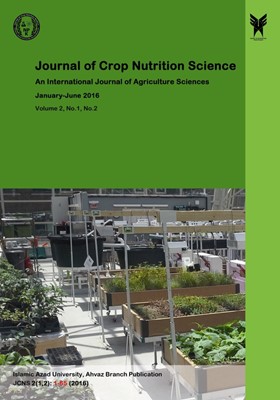-
-
List of Articles
-
Open Access Article
1 - Assessment Effect of Organic Matter and Arsenic on Transfer Coefficient, Tolerance Index and Phytoremediation in Cress (Lepidium sativum L.)
Elahe Kardan Ali Gholami Alireza Jafarnejadi Khoshnaz Payandeh Ebrahim Panahpor -
Open Access Article
2 - Investigating Effect of Growth Promoting Bacteria and Nitrogen Fertilizer on Qualitative and Quantitative Traits of Zea Mays L. Hybrids
Anise Jorfi Mojtaba Alavi Fazel Adel Modhej -
Open Access Article
3 - Influence of Zeolite and Biological Fertilizer under Different Irrigation Regime on Quantitative and Qualitative Traits of Sugar beet (Beta Vulgaris L.)
Tahereh Hasanabadi Davood Habibi Hamideh Khalaj -
Open Access Article
4 - Assessment Effect of Different Amounts of Iron and Manganese Sulfates on the Qualitative and Quantitative Yield of Wheat in South West of Iran (Ramhormoz Region)
Fariba Kohzadvand Mani Mojadam -
Open Access Article
5 - Evaluation Effects of Chemical, Organic and Biologic Fertilizers on Chamomile (Matricaria chamomile L.) Yield
Fatemeh Jahani Abbas Maleki Alireza Pazoki -
Open Access Article
6 - Influence of Potassium Foliar Application on Cotton Yield (Gossypium barbadense L.) under Saline Condition
Ali Asghar Koshki Mohammad Armin -
Open Access Article
7 - Determination of Soil Aggregate Stability in Different Types and Amounts of Organic Matter in Khuzestan Plain, Iran
Mohiaddin Goosheh Mohammad Khayat
-
The rights to this website are owned by the Raimag Press Management System.
Copyright © 2021-2025







